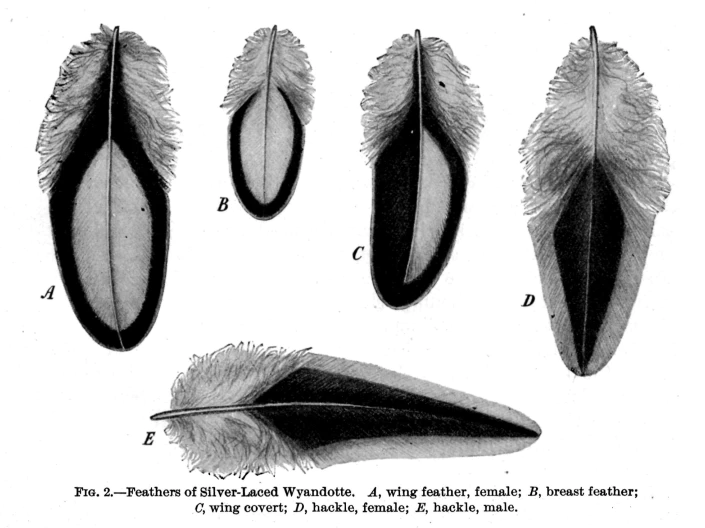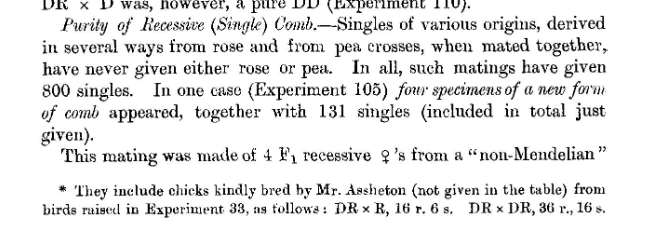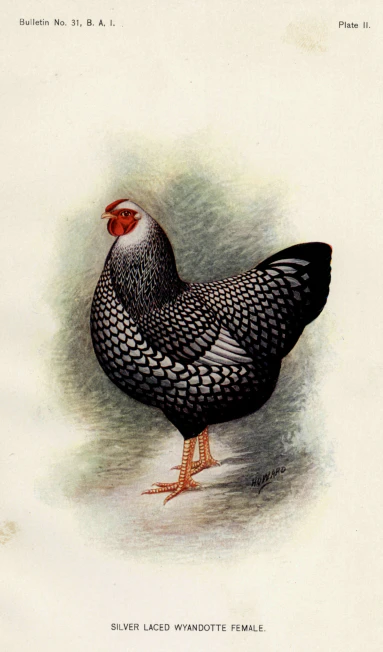Monograph or aether
The fate of folk knowledge
This is my first year keeping poultry, and among the things I’m learning are “which traits are genetically linked in chickens,” and “how information is stored and shared among poultrymen.”
Poultry comb inside baseball
My flock is fleshing out their secondary sex characteristics this week, and I spent a few days baffled by the fact that I might have two roosters, contrary to what I’d ordered and what I’d been expecting based on comb morphology in the flock’s early weeks.
There’s a lot to know about comb morphology. I chose my poultry based on breeders’ suggestions of cold-hardiness. Later I learned that they’re cold-hardy largely due to having ‘rose’ combs (close to the skull, no fancy nubs for heat dissipation and/or frostbite).
I was confused about my rooster(s) because one chick had been sporting a bigger comb since early on. Once his wattles stretched out, I noticed that a second fowl had stretched its wattles on the same day—but hadn’t grown the spiky comb I’d taken to mean “definitely the rooster”. Watching wattles, green tail feathers, posture, neck—they’re definitely both roosters.
So discussing with my friends “which rooster will stay with the flock / which rooster gets fried,” I find the reason that single combs ‘sport’ in rose comb breeds is that homozygous rose combs often have sperm motility issues, so flocks tend to stay heterozygous. So do I keep the single-comb rooster for more offspring, or the rose-comb rooster to perpetuate the cold-hardiness that motivated my choice of this variety?
Passed via lore?
I first stumbled across the ‘rose comb/lower fertility’ observation in a confidently asserted but completely uncited post from commenter with a default avatar on a phpBB forum. And my friend noted
weird how much animal husbandry tech there is just passed via lore and not really studied or understood by science
But this wasn’t my understanding at first—most of animal husbandry, far as I can see, is understood by science. In 1904 the OG, RC Punnett, was publishing on this very topic. They just had worked enough of it out by 1910, that few people are see fit to research it in the modern day. But you can still read all the old monographs. (And what cool monographs they are—both the photos from this post are screengrabs from 1901.)

Monograph or aether
Well, that’s the problem with folklore that in the one point of time it’s like an air, in the next point of time nobody knows it and nobody remembers anything.
observed Rafał Miśta, one of my favorite sociologists.
And that’s sort of the crux of it. When conditions shifted such that animal husbandry was no longer critical to the survival and flourishing of J. Random Citizen, a lot of knowledge did vaporize. Take this footnote, from Punnett (1904).

Whatever Mr. Assheton knew is gone, and only this fragment exists to let us know that there was something to be known. There are also almost certainly fewer laymen in 2022 with the equivalent poultry knowledge of Assheton and his peers in 1903.
There’s also the problem of missing monographs—Hindhaugh bothered to type up work that would let me decide which rooster to keep, but I can’t find a copy:
Hindhaugh, W. L. S. (1932). Some observations on fertility in White Wyandottes. Poultry J, 17, 555-560. Available in its entirety nowhere.

In the fullness of time, knowledge can either make it into a monograph, or it remains “like an air”: freely accessible and known to all, but vulnerable to being vaporized by a stiff breeze. I’m tempted to consider the uncited forum post as part of the aether (I was able to track down its source , but not to comprehend it).
I’m reminded of Crispy Chicken’s concept of ‘intellectual fascia’. The bones of a theory may be immortalized in a monograph, while the connective tissues, lymph, and plumage are long gone by the time an archaeologist approaches with his hammer.
As shifting pressures will direct human attention away from what puts literal meat on the table and toward what puts metaphorical meat on the table, those who want to know what their forefathers knew will have only the monographs available.
Works referenced
“Rose comb is from an inversion on chromosome 7 that by the way happens to clip the end of an adjacent gene affecting sperm motility. There are two documented alleles that cause rose comb with one of them repairing the sperm gene. The alleles are usually designated R1 (clips the sperm motility gene) and R2 (repairs the sperm motility gene but still gives rose comb). R1 is very common and R2 is very rare.Single comb is from a combination of a normal single comb gene on chromosome 1 plus the effect of the rose comb inversion on chromosome 7. If the inversion is not present, the result is a single comb bird whether male or female. If the inversion is heterozygous, meaning one chromosome has it and the other doesn’t, you get a fleshy rose comb. If both copies of chromosome 7 have the rose comb inversion, you get a rose comb bird. Caveat that there are several modifier genes that also affect comb size and shape and are not on chromosomes 1 or 7. Pea comb is a variation of the single comb gene on chromosome 1. If you combine pea comb with rose comb, you get walnut comb.” uncited, from DarJones, on a chicken hobbyists’ forum
Bateson, W., Saunders, E. R., Punnett, R. C. Experimental Studies in the Physiology of Heredity. 1904. Available in its entirety at: https://archive.org/details/RoyalSociety.ReportsToTheEvolutionCommittee.ReportIi.Experimental/page/n1/mode/2up , pp. 99-119. (See also their opener on my favorite bouquet inclusions, the gillyflower/matthiola!)
Gibbs, Charles S. A Guide to Sexing Chicks, 1935. Available in its entirety at: http://reader.library.cornell.edu/docviewer/digital?id=chla2802548#page/12/mode/2up
McGrew, T. F. American Breeds of Fowls: II.—The Wyandotte. 1901. Available in its entirety at: https://naldc.nal.usda.gov/download/5421200/PDF
Imsland, Freyja et al. “The Rose-comb mutation in chickens constitutes a structural rearrangement causing both altered comb morphology and defective sperm motility.” PLoS genetics vol. 8,6 (2012): e1002775. doi:10.1371/journal.pgen.1002775 . Available in its entirety at: https://www.ncbi.nlm.nih.gov/pmc/articles/PMC3386170/